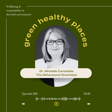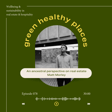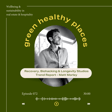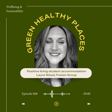
mental wellness tech in hotels offices residences by opo
Welcome to episode 062 of the Green & Healthy Place podcast in which we discuss the themes of wellbeing and sustainability in real estate and hospitality today.
I’m your host, Matt Morley of Biofilico wellness real estate and in this episode I’m in Ibiza talking to Chris Connors, Founder and Creative Director of OPO, a wellness tech studio applying the principles of mindfulness to daily life via psycho-acoustics, neuro-aesthetics and awareness practices.
Belfast-born Chris is a psychotherapist, leadership coach and master in zen meditation. He has previously created projects for the likes of Prada, LVMH, Nike, Aesop, Kering and Net a Porter.
Amongst other things, we discuss everything from their nature-based mindfulness portals scattered around various mixed-used developments in London, their multi-sensory quiet room in a coworking office and the meditative moments they create during the guest journey for luxury resorts and hotels.



















